Anyone want to upcycle some of that ubiquitous cardboard packaging that passes through our homes and turn it into teaching/learning tools? You’re on! Let’s make some flashcards!!
This week’s photo actually shows three related sets of alphabet flashcards that measure 3” square. Call these approximate measurements, because no one needs to waste precious time obsessing over the precision and exactness of something we’re making for free. I collected cereal boxes, brownie mix boxes, popsicle boxes, tissue boxes, pudding cup boxes, and pretty much every flavor of thin cardboard box that was large enough to cut up into something else. Confession: I made these with a paper cutter, but only because I saved up and treated myself to one. During most of our homeschooling years, I used a ruler and scissors for projects like this, and the results were just as good.
Open the boxes flat and start measuring and cutting. Again, don’t let perfectionism sidetrack you with thoughts of non-90-degree corners or less-than-perfect sides. Your students can learn from playing with these cards even after they are rescued from an eager-to-play-fetch-with-anything puppy. When you have a decent supply of cards cut from the cardboard, grab your Sharpie marker and write on the blank sides. Here we have one set with upper case letters (upper left), a set with lower case letters (lower center), and a set with both upper and lower case letters in pairs (upper right). I have also made sets with numbers 1-100, states and capitals, and many other topics that I hope to address in future Workshop Wednesday posts. (Anticipation!)
Bonus Tips:
- I favor teaching letter recognition with upper case letters first, since reversals are less likely; then introducing the lower case letters as the “little brothers” of the capitals. Kids get it, even when the big brothers and little brothers don’t look exactly alike. Learning to group the larger and smaller letters as pairs is another method for avoiding reversals.
- Making multiple sets of letters will allow your students to spell out vocabulary words, play word games, or leave traces of their newly-acquired knowledge all around the house as they spell out the names of every lamp, vase, and throw pillow.
- If your students have mastered letter recognition, you can make 3×5” word cards and practice turning sounded-out words into sentences.
Learning Style Activities
Visual learners will appreciate flashcards with color, so you can either use colored markers for the main information or let your visual student draw designs on the edges and corners of the cards with colored pencils or fine-point markers to jazz up the natural gray or brown of the cardboard.
Auditory learners will love to read each letter aloud, no matter what activities or games you play with the cards. Switch things up by asking them to say the sound of the letter instead of (or in addition to) its name.
Tactile learners have already grabbed your new supply of flashcards and are spreading them out on the floor or table, rearranging the letters into words. That’s how you can confirm that you have a tactile student: their hands and fingers are into everything, learning as much as they possibly can about texture, heft, and balance. Please don’t scold them for grabbing and touching—it’s how they learn best. A tactile learner who is forced to keep his hands in his lap is like a visual learner wearing a blindfold. Seriously.
Kinesthetic learners will adore playing games with these cards, especially if you spread things out. Drop the stack of upper case letters on the floor in the living room. Drop the stack of lower case letters on the kitchen table. Now shuffle the “pairs” cards and place that stack in a neutral location somewhere between the other two piles of cards. Ask your student to look at the top card and run to find the matching letter cards from each of the other locations and bring them back. (Beginning students may need to take the pairs card with them for reference.) Grouping all three cards together will prove he brought the correct ones. Your energetic student can repeat this activity until he is worn out enough to sit down for reading time or some other lesson that requires seatwork.
Combine all learning styles into challenging activities that will help your students learn from all situations and all styles of teaching. Let your imagination run free with ideas and adaptations for your own students, living quarters, and academic needs. If the weather is agreeable, take the cards outside and combine relay races with spelling or vocabulary words. Mud puddles can’t destroy your prized set of flashcards, since replacements are easily made from the next empty box. You may soon find yourself rescuing cardboard boxes from the recycling bin and calling them your “homeschool supplies” as you think of more and more uses for homemade flashcards!
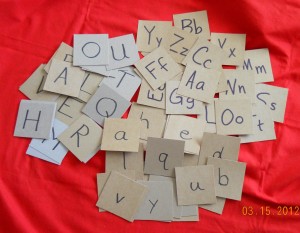
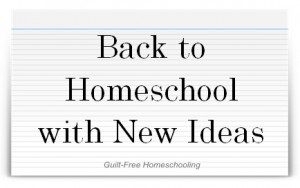

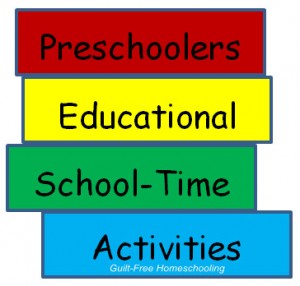

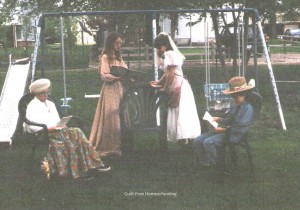
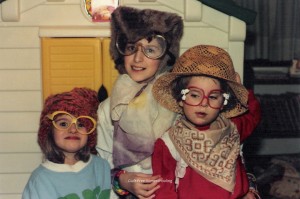


 Guilt-Free Homeschooling is the creation of Carolyn Morrison and her daughter, Jennifer Leonhard. After serious disappointments with public school, Carolyn spent the next 11 years homeschooling her two children, from elementary to high school graduation and college admission. Refusing to force new homeschooling families to re-invent the wheel, Carolyn and Jennifer now share their encouragement, support, tips, and tricks, filling their blog with "all the answers we were looking for as a new-to-homeschooling family" and making this website a valuable resource for parents, not just a daily journal. Guilt-Free Homeschooling -- Equipping Parents for Homeschooling Success!
Guilt-Free Homeschooling is the creation of Carolyn Morrison and her daughter, Jennifer Leonhard. After serious disappointments with public school, Carolyn spent the next 11 years homeschooling her two children, from elementary to high school graduation and college admission. Refusing to force new homeschooling families to re-invent the wheel, Carolyn and Jennifer now share their encouragement, support, tips, and tricks, filling their blog with "all the answers we were looking for as a new-to-homeschooling family" and making this website a valuable resource for parents, not just a daily journal. Guilt-Free Homeschooling -- Equipping Parents for Homeschooling Success!

Recent Comments